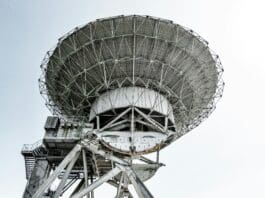This post is also available in:
 עברית (Hebrew)
עברית (Hebrew)
A new smartphone app can connect with off-the-shelf drones and send them to autonomously inspect multiple locations using coordinates received by SMS text message.
The CASCADE project developed by researchers at Cranfield University (UK) is designed for accelerating the exploitation of unmanned aerial vehicles (UAVs) across a range of science and industry applications by automating control and facilitating communication between multiple drones so they can work on tasks together. Use cases can include the collection of crop health data in specific locations and searching for missing persons.
The app – designed for Android phones and to work with the majority of DJI drones – receives waypoints via SMS text message, compiles the mission and sends standard off-the-shelf (commercially available to the general public) drones on autonomous missions with no user intervention required.
Safety features are included within the app to ensure the drone operates within legal requirements, and currently a safety pilot is required to keep the drone within line of sight throughout the mission.
Mission waypoints are defined by a separate higher level survey drone which processes data during flight and communicates to a ground control station. SMS messages are then sent by the ground station to the smartphones connected to the lower level UAVs with coordinates to fly to.
Next steps in the project will focus on automating the control of multiple drones and technology development that allows UAV operations at extended and beyond visual line of sight, according to cranfield.ac.uk.
Alex Williamson, Experimental Research Fellow in UAV Operations in the Centre for Autonomous and Cyber-Physical Systems, Cranfield University, said: “Autonomy is a fundamental factor in increasing the ease of adoption of UAVs for many applications while reducing operational costs. Creating this smartphone app has demonstrated that UAVs can carry out complex tasks autonomously from simple instructions.”




